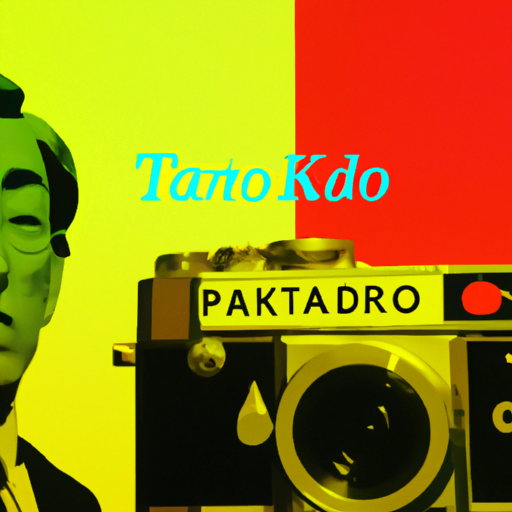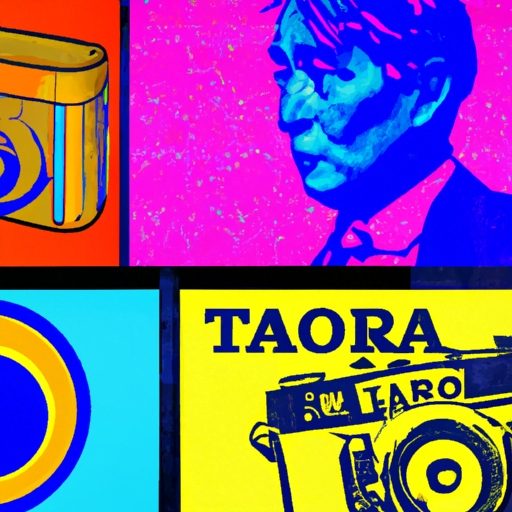
-
Table of Contents
Tadanori Yokoo: The Master of Japanese Pop Art

When it comes to the world of art, few names have had as much impact as Tadanori Yokoo. Born in Nishiwaki, Hyogo Prefecture, Japan, in 1936, Yokoo has become renowned for his unique style that blends traditional Japanese art with Western influences. His work has not only captivated audiences in Japan but has also gained international recognition, making him one of the most influential artists of his generation. In this article, we will explore the life, art, and impact of Tadanori Yokoo, shedding light on his contributions to the world of pop art.
Early Life and Influences
Tadanori Yokoo’s artistic journey began at a young age. Growing up in post-war Japan, he was exposed to a variety of influences that would shape his artistic style. One of the most significant influences on Yokoo was the vibrant world of Japanese cinema. He was particularly drawn to the works of directors such as Akira Kurosawa and Yasujirō Ozu, whose films often featured striking visuals and powerful storytelling.
Yokoo’s interest in cinema led him to pursue a career in graphic design. He studied at the Kyoto City School of Arts, where he honed his skills in typography and layout design. During this time, he also became fascinated with the works of Western artists such as Salvador Dalí and Max Ernst, whose surrealistic style would later influence his own art.
The Rise of Yokoo’s Pop Art
Yokoo’s breakthrough as an artist came in the 1960s when he embraced the emerging pop art movement. Inspired by the works of Andy Warhol and Roy Lichtenstein, Yokoo began incorporating elements of popular culture into his art, creating a unique blend of traditional Japanese aesthetics and contemporary Western influences.
One of Yokoo’s most iconic works from this period is his poster for the 1968 film “Eros Plus Massacre.” The poster features a collage of images, including a portrait of the film’s director, Yoshishige Yoshida, and a depiction of the film’s title in bold, psychedelic lettering. This poster perfectly encapsulates Yokoo’s style, with its vibrant colors, bold typography, and juxtaposition of different elements.
Yokoo’s pop art not only reflected the changing cultural landscape of Japan but also served as a critique of consumerism and mass media. His works often featured images of popular icons, such as Marilyn Monroe and Elvis Presley, which he used to explore themes of fame, identity, and the commodification of art.
Exploring Traditional Japanese Art
While Yokoo’s pop art gained him international recognition, he never lost touch with his Japanese roots. Throughout his career, he continued to explore traditional Japanese art forms, incorporating elements of ukiyo-e, a genre of woodblock prints that flourished during the Edo period.
One of Yokoo’s notable works that showcases his fusion of traditional and contemporary influences is his series of prints titled “100 Posters of Tadanori Yokoo.” In this series, he reimagines classic ukiyo-e prints by adding modern elements, such as pop culture references and bold typography. The result is a visually striking collection that pays homage to Japan’s artistic heritage while pushing the boundaries of traditional art.
Yokoo’s Impact on Contemporary Art
Tadanori Yokoo’s influence extends far beyond his own artwork. His unique style and innovative approach to blending traditional and contemporary influences have inspired countless artists around the world.
One artist who has been heavily influenced by Yokoo is Takashi Murakami, a prominent figure in the contemporary art scene. Murakami, known for his colorful and playful works, has cited Yokoo as one of his major influences, particularly in terms of his use of popular culture references and bold graphic style.
Yokoo’s impact can also be seen in the world of graphic design. His innovative use of typography and layout design has inspired a new generation of designers who continue to push the boundaries of visual communication.
Conclusion
Tadanori Yokoo’s contributions to the world of art are undeniable. His unique blend of traditional Japanese aesthetics and contemporary Western influences has made him a true master of pop art. Through his vibrant and thought-provoking works, Yokoo has not only captured the essence of his time but has also left a lasting impact on the art world.
From his early influences in Japanese cinema to his exploration of traditional art forms, Yokoo’s art continues to inspire and captivate audiences around the world. His ability to seamlessly blend different artistic styles and cultural influences is a testament to his creativity and vision.
As we look to the future, it is clear that Tadanori Yokoo’s legacy will continue to shape the world of art and inspire future generations of artists. His ability to bridge the gap between tradition and modernity serves as a reminder of the power of art to transcend boundaries and create meaningful connections.
